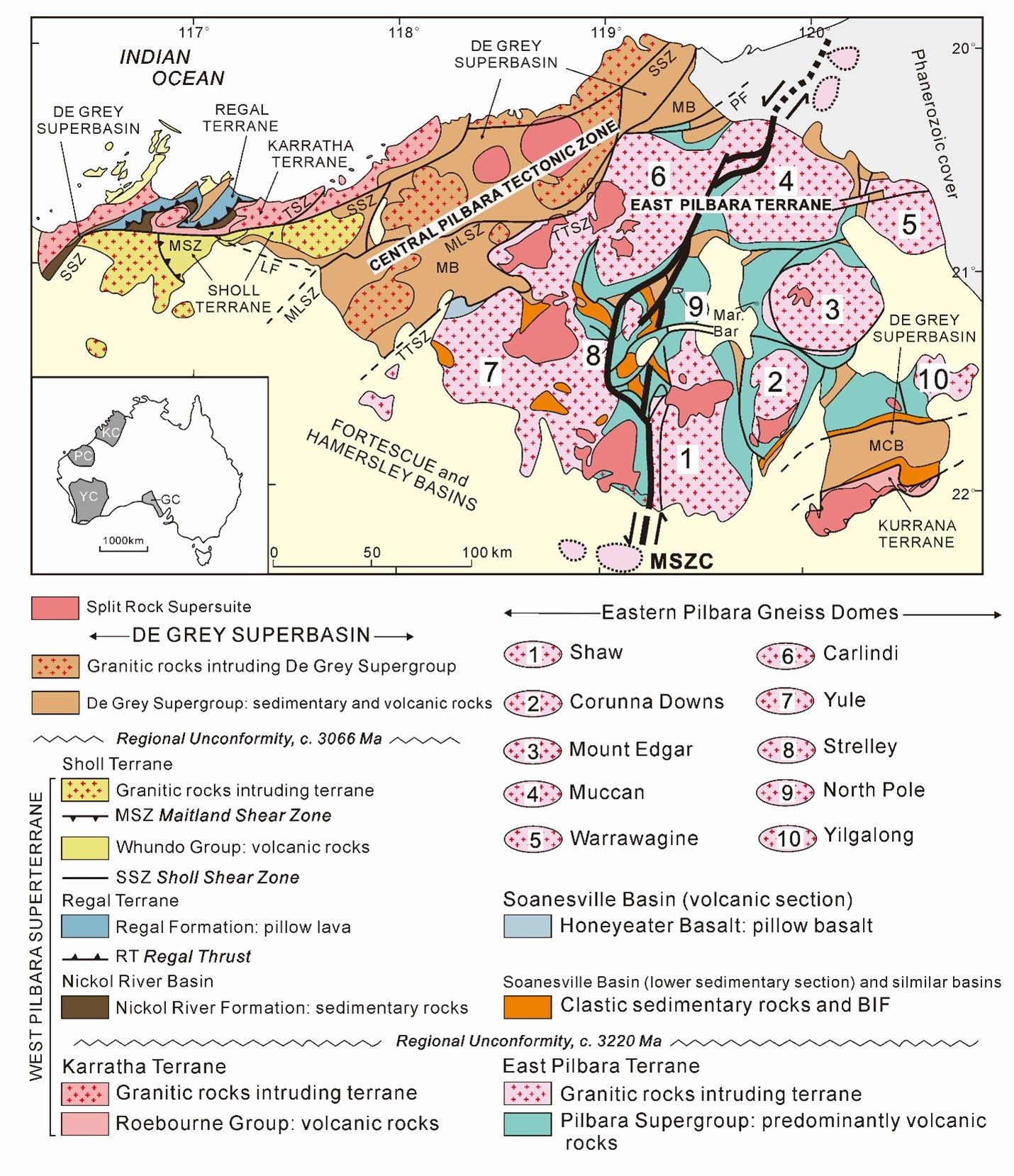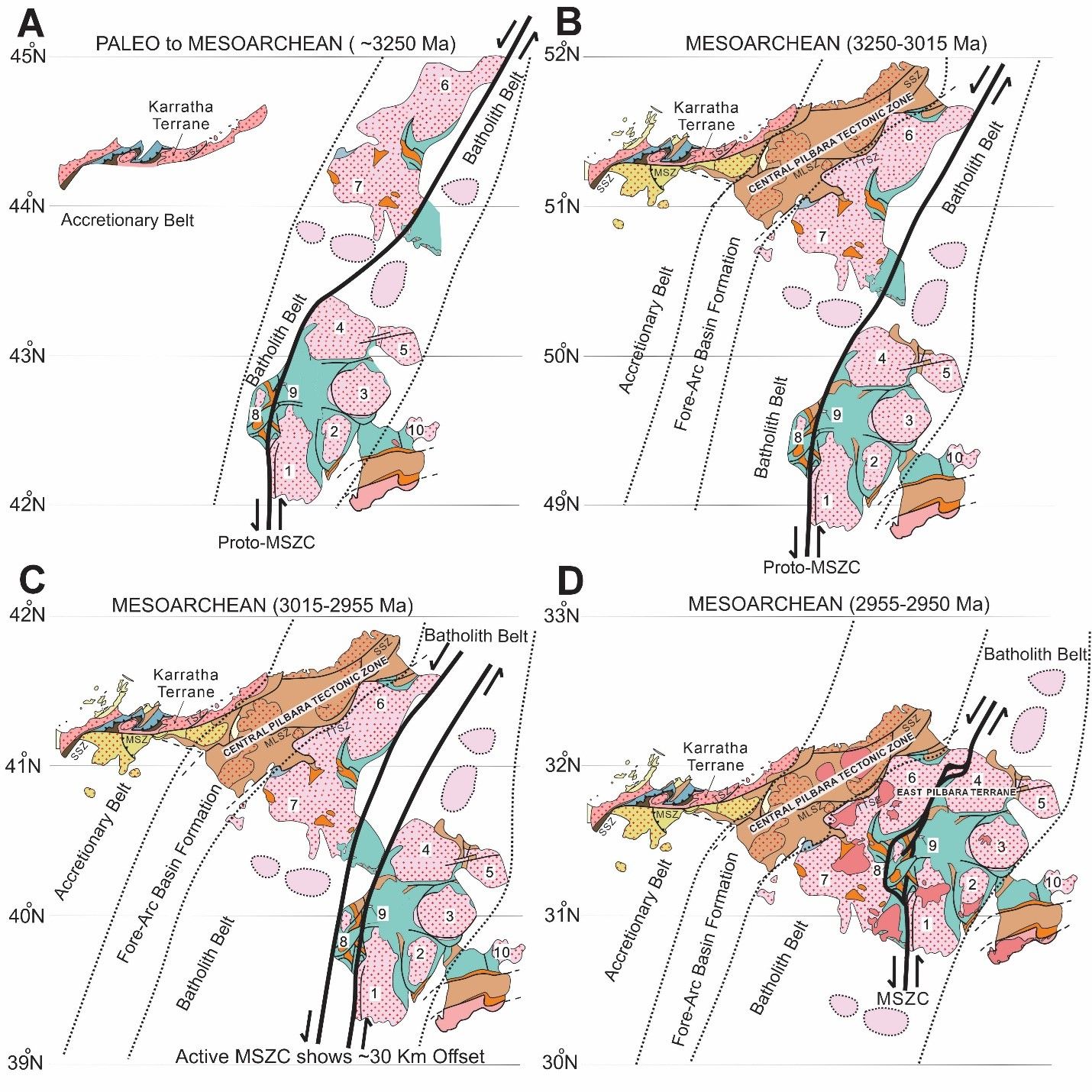Recently, Professor Tim Kusky, Director of the Center for Global Tectonics of China University of Geosciences, and Professor Wang Lu, State Key Laboratory, directed our Sudanese doctoral student Abdelmottaleb Aldoud to publish an article in the internationally famous geology journal Geology, entitled "Is the Mesoarchean Mulgandinnah shear zone, Pilbara Craton, the world’s oldest arc-slicing transform fault?". This is the first time that an international student from our school has published an international SCI article as the first author in the Nature Index journal.
The article have uncovered evidence of the world's oldest arc-slicing transform fault, a massive geological feature that has played a crucial role in shaping our planet. Located in the Pilbara Craton (Fig 1) of Western Australia, the Mulgandinnah shear zone is believed to have played a crucial role in the formation of the Pilbara Craton, one of the oldest known pieces of continental crust. By facilitating the movement and collision of tectonic plates, the shear zone may have helped to assemble the early continents.
What is a Transform Fault?
Imagine a pair of scissors cutting through a piece of paper. A transform fault is similar, but instead of paper, it's a massive section of the Earth's crust. These faults are horizontal boundaries where two tectonic plates slide past each other. Unlike other types of faults that cause mountainsor earthquakes; the arc-slicing transform faults represent an integral componentof convergent margin tectonics, they are developed above oblique subduction systems, cutting through and displacing the entire magmatic section of arcs, leading to tectonicrepetition of segments of the overriding plate in the ensuing orogenic collage; and resulted in the lateral displacement.

Fig 1: Geological map of Pilbara Craton.
The article sheds light on the complex geological processes that have been at work for billions of years. By understanding the role of transform faults like the Mulgandinnah shear zone, scientists can better reconstruct the Earth's ancient history and predict future geological events, moreover, by studying this ancient transformfault, scientists can piece together the puzzle of our planet's evolution and gain valuable insights into the forces that have shaped the world we live in today.
The paper revealed data that documents that the Paleo-Mesoarchean Eastern Pilbara craton, recently interpreted to be a preserved mid-upper crustal level of a magmatic arc, is cut and repeated by a major 3.0–2.93 Ga arc-slicing fault, the Mulgandinnahshear zone, which sliced a previously 600 × 100 km segment of a Mesoarchean arc system, laterally moving different segments to their presently juxtaposed 200 × 200 km preserved fragment (Fig2). This evidence demonstrates lateral plate motions by 3.0 Ga and shows oblique subduction, arc plutonism, arc-slicing, and repetition, reflecting that crustal growth in modern-style convergent margins was in full operation by the Mesoarchean.

Fig 2: Formation of the present-day preserved Pilbara craton by arc-slicing of a formerly linear magmatic arc batholith belt and outboard accretionary complex, during Paleo-Mesoarchean oblique plate motions. The pink plutonic complex with dashed lines is based on the geophysical interpretation of rocks under younger cover.
According to the homepage of the official website of Geology, Geology has been the Web of Science's #1 ranked "geology" journal for 18 years in a row. The journal Geology aims to publish timely, innovative, and provocative articles relevant to its international audience, representing research from all fields of the geosciences.
Information of the paper: Aldoud, A., Kusky T., and Wang L., 2024. Is the Mesoarchean Mulgandinnah shear zone, Pilbara Craton, the world’s oldest arc-slicing transform fault? Geology, v. XX, p. XXX–XXX, https://doi .org /10 .1130 /G52360 .1
(Provided by the International Education College)